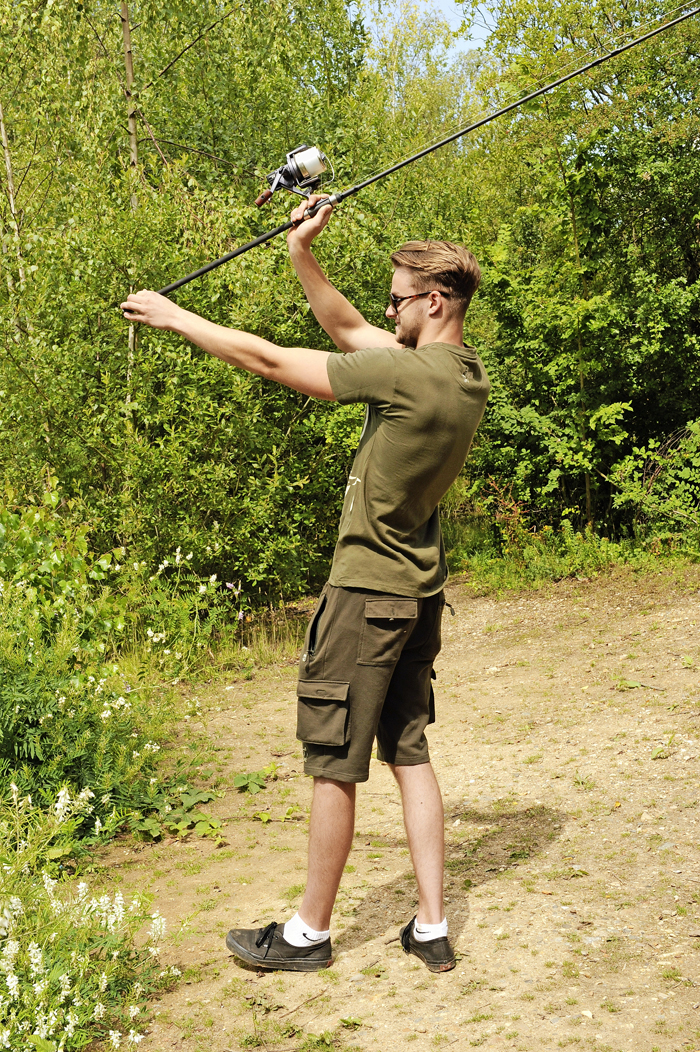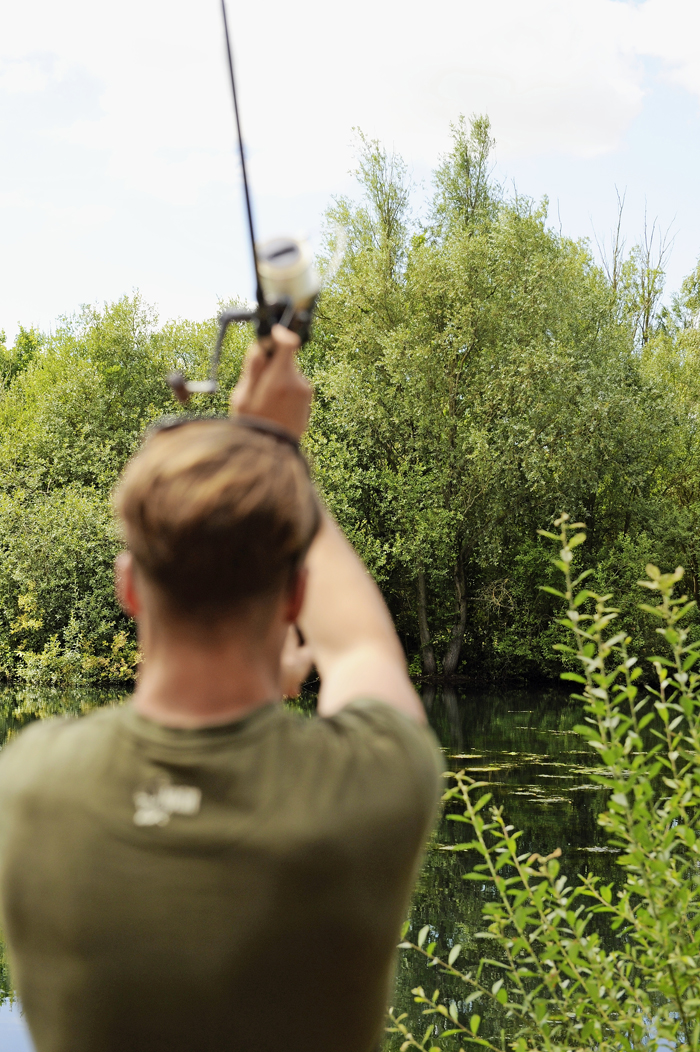How to cast a carp rod accurately
Technique in carp fishing is as crucial as in any sport. Here’s how to master the casting basics for distance and accuracy
It's a compliment often paid to footballers: “He does the simple things well.” A good midfielder might not win adulation for his five-yard passes, but you’d soon notice if they started going awry.
The same can be said of top anglers and casting. If you ever get to watch a talented carper in session – and plenty of venue open days make this a possibility – then pay attention to their basic skills. A good angler makes casting look so effortless you can’t help but wonder if their overall talent goes hand in hand with their lead-chucking ability.
Nash employee Mike Wilson is just such a carper and his tips are well worth heeding.
On the banks of the beautiful Chigboro Fisheries in Essex, Mike explains: “Casting is all about balance and feel. I used to really take my time – I would stand there for ages before I cast. In fact, once you know what you’re doing, it’s best just to swing the lead behind you and go for it. Don’t tink too hard about it. If you wait for ages then that’s when things can go wrong.”
Like all sporting techniques, constant repetition improves performance.
Mike continues: “Practice. Go to a field and, if there are people around, then cast a dog ball so it’s perfectly safe.
“Or, if you’re not catching fish, don’t be afraid to pack up an hour early and have a casting competition with your friends. Obviously, make sure you are not disturbing anyone else’s fishing.”
Underarm casting
Almost all carp casts are overhead ones, but underarm lobs should not be ignored.
Mike says: “It’s all about balance and rhythm. With practice you will just ‘feel’ when it’s right to let go. Don’t rush it.”
Find your footing
The main image shows the stance you need to adopt for a stable, powerful cast.
Point your leading leg in the direction you want your rig to go and ‘brace’ the back leg at right angles to this. The power in the cast comes from transferring your weight from your back foot to the front one. On a long-distance cast you can rock back on your back foot and stamp your front foot forward as you release the line.
The image above shows Mike scuffing a mark in the ground so he is able to cast from the same point each time.
Get maximum leverage
How not to cast
How to cast
Carp rods have relatively long handles for a reason.
Think back to your school science lessons and you’ll remember that a longer lever is capable of exerting more force through the pivot point.
If the bottom hand grips the rod butt as shown in the top diagram you are vastly reducing the power you can generate in the cast.
Grip the bottom of the rod and pull down with this hand during the cast.
The key to smooth and powerful casting is getting both your arms to work in harmony with each other. One pulls as the other one pushes.
As with all sporting techniques, practice makes perfect, so don’t just cast when you’re on a fishing trip.
Get a grip!
How not to cast
How to cast
The point at which you grip the rod and reel is your pivot point, so it’s vitally important it is both comfortable and secure.
As you can see from the photographs above, a balanced approach is what’s needed.
With your thumb on the top of the reel seat, wrap two fingers around each side of the reel stem.
Use just one finger to pluck the line from the spool – don’t clutch at it with a fist. This aids control when it comes to releasing the line during the cast.
Line up to your target
All far banks have some kind of feature that you can line up your cast with. Remember that what is easily visible in daylight may be quite the opposite once the sun goes down. It’s worth noting the tallest tree for use as a silhouette marker in darkness. You could even temporarily place tinfoil in a branch to reflect torchlight.
Get your cast right
1. When lining up your cast take a moment to visualise your rig’s landing zone and the force you think you’ll need to get it there.
Once you are happy that everything is in place, just go for it. Yes, crack-offs and tangles can be embarrassing but if you think about the worst-case scenario as you are about to whip the rod through the air then mistakes are bound to happen. Relax and, to borrow a sporting slogan, just do it.
2. When the lead is in flight, relax and keep your movements to a minimum. Watch the rig’s progress and be aware of anything untoward like a wind knot or tangles. If you react to these early enough and put the brakes on the cast you can avert crack- offs and serious tangles.
Another point worth noting is not to settle for second best. If your first cast was ‘nearly there’, reel in and get it ‘spot on’. This extra effort separates good anglers from poor ones.
3. If you’re using a line clip to get better accuracy (and the line hitting the clip also helps straighten your rig as it pierces the water surface) then use your fingers to ‘feather’ and slow down the last few metres of line before it hits the buffer.
In conjunction with this, bring the rod tip back in the air and cushion the impact on the clip by pushing the rod forward again. If you hit the clip abruptly, the line’s elasticity can make the rig spring back towards you.
Give yourself enough line
How much line you have from the rod tip to your lead priot to casting is known as the ‘drop’.
Again, it’s all about the science of leverage and momentum, but a fail-safe rule is to line up your lead with the spigot (or join) in your rod. Obviously this only works if it’s a two-piece model!
Check for tangles
It might seem simple, but we have all seen or done it – wound up a big cast only to realise the line is tangled around the rod tip just milliseconds before you hear a sickening crack and see an unattached rig sailing into the water. Get into the habit of checking the tip ring for tangles on every cast. It takes no time at all to double and triple check.













